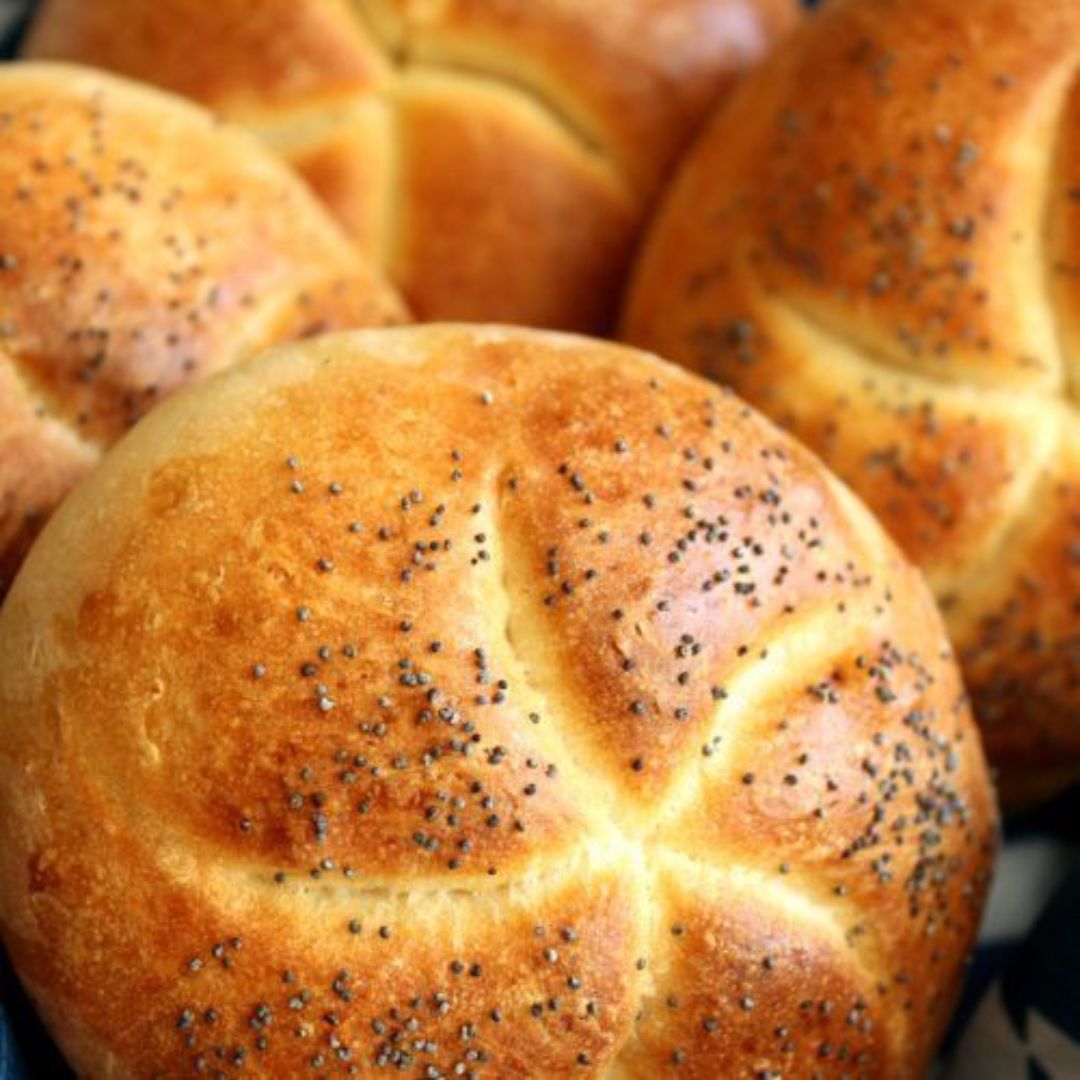German bread, also known as “Brot” in German, has a special place in many Germans’ hearts and homes. German bread, known for its hearty texture, robust flavor, and rich cultural significance, is more than just a food; it is a cherished tradition passed down through generations. German bread comes in a variety of shapes, sizes, and flavors, reflecting the distinct tastes and preferences of different regions across Germany. Whether eaten straight from the bakery or with traditional German meats, cheeses, and spreads, German bread is a versatile and beloved staple that adds warmth and comfort to any meal. Let’s look at the rich history and delicious flavors of authentic German bread.
Ingredients:
(Ingredients may vary depending on the specific type of German bread being made. Below are common ingredients used in traditional German bread recipes.)
- 500g (about 4 cups) bread flour
- 300ml (about 1 1/4 cups) lukewarm water
- 7g (1 packet) active dry yeast
- 10g (2 teaspoons) salt
- 1 tablespoon sugar (optional, for yeast activation)
- Rye flour, whole wheat flour, or other specialty flours (optional, for added flavor and texture)
- Seeds such as sesame, poppy, or sunflower (optional, for topping)
Instructions:
1. Activate the Yeast:
- In a small bowl, combine the lukewarm water, sugar (if using), and active dry yeast. Stir gently and let it sit for about 5-10 minutes until foamy and activated.
2. Mix the Dough:
- In a large mixing bowl, combine the bread flour and salt. If using specialty flours, you can add them at this stage for added flavor and texture.
- Make a well in the center of the flour mixture and pour in the activated yeast mixture.
- Using a wooden spoon or your hands, mix the ingredients until a shaggy dough forms.
- Turn the dough out onto a floured surface and knead for about 8-10 minutes until smooth and elastic. Add more flour if necessary to prevent sticking, but be careful not to add too much, as the dough should remain slightly tacky.
3. First Rise:
- Place the kneaded dough in a lightly oiled bowl, cover with a clean kitchen towel or plastic wrap, and let it rise in a warm, draft-free place for about 1-2 hours, or until doubled in size.
4. Shape the Loaf:
- Once the dough has risen, gently punch it down to release the air bubbles.
- Shape the dough into a loaf or the desired shape for your bread. You can also divide the dough into smaller portions to make rolls or traditional bread shapes like “Bauernbrot” or “Laib.”
- Place the shaped dough onto a baking sheet lined with parchment paper or into greased bread pans.
5. Second Rise:
- Cover the shaped dough with a clean kitchen towel or plastic wrap and let it rise for another 30-60 minutes, or until puffy and slightly increased in size.
6. Preheat the Oven:
- While the dough is rising, preheat your oven to 425°F (220°C). Place a shallow pan of water on the bottom rack of the oven to create steam, which helps develop a crispy crust.
7. Bake the Bread:
- If desired, slash the top of the risen dough with a sharp knife or razor blade to allow for expansion during baking.
- Place the baking sheet or bread pans in the preheated oven and bake for 25-35 minutes, or until the bread is golden brown and sounds hollow when tapped on the bottom.
- If adding seeds, you can brush the top of the bread with water or an egg wash and sprinkle the seeds on top before baking for added flavor and texture.
8. Cool and Enjoy:
- Once baked, transfer the bread to a wire rack and let it cool completely before slicing.
- Serve slices of authentic German bread with butter, cheese, cold cuts, or your favorite spreads, and enjoy the delicious flavors and textures of this beloved staple of German cuisine!
Optional Tips:
- Experiment with different types of flour, such as rye flour, whole wheat flour, or spelt flour, to create variations of German bread with unique flavors and textures.
- For a traditional German bread experience, try shaping the dough into pretzels, rolls, or rustic loaves like “Bauernbrot” or “Pumpernickel.”
- To enhance the flavor of the bread, you can add ingredients like caraway seeds, fennel seeds, or chopped nuts to the dough before baking.
- Store leftover bread in a paper bag or bread box to maintain its freshness and prevent it from drying out. German bread can also be frozen for longer storage.
To summarize, authentic German bread is a beloved staple of German cuisine, providing a delightful combination of hearty texture, rich flavor, and cultural tradition. Whether fresh from the bakery or homemade in your own kitchen, German bread brings warmth, comfort, and a sense of nostalgia to any meal. With its simple ingredients, traditional techniques, and endless variations, German bread invites you to discover Germany’s rich culinary heritage and share the joy of baking and breaking bread with loved ones. Gather your ingredients, roll up your sleeves, and embark on a delicious journey into the heart of German bread-making. It’s a culinary adventure worth savoring! 🥨🇩🇪🍞

